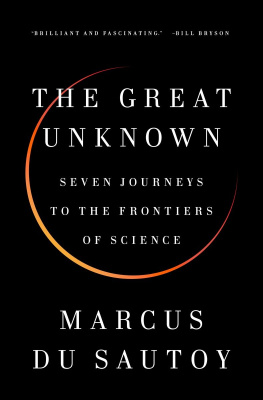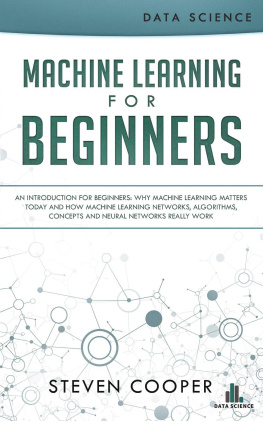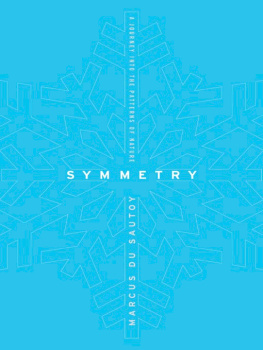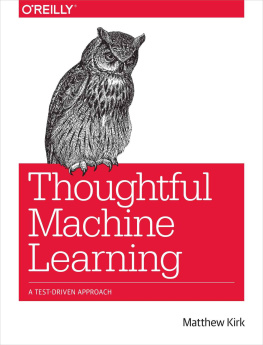Contents
Pages

CONTENTS
To Shani,
for all her love and support,
creativity and intelligence
Map with a local and global maximum, generated by the author in Mathematica.
Euclids algorithm.
Diagram of three websites connected.
Diagram of balls being redistributed between websites.
A perceptron.
A neural network.
Prediction for the US population based on a degree 11 equation.
Plotting a user in three-dimensional film space.
A two-dimensional shadow that distinguishes between drama and action films. From David H. Stern, Ralf Herbrich and Thore Graepel, Matchbox: Large Scale Online Bayesian Recommendations, in WWW09: Proceedings of the 18th International World Wide Web Conference (2009), with kind permission from the authors.
Diagram showing the amount of yellow in paintings by Picasso and Van Gogh.
Diagram showing the amount of blue in paintings by Picasso and Van Gogh.
Plotting paintings by Picasso and Van Gogh in two-dimensional space.
The Wundt Curve.
A simple three-part canon.
The Alberti bass pattern, from Mozarts piano sonata in C, K545.
David Copes analysis of Scriabins Prelude No.1, Op. 16.
Mihaly Csikszentmihalyis theory of flow. Oliverbeatson / Wikimedia Commons / Public Domain.
Diagram demonstrating that if you add together N consecutive odd numbers, you will get the Nth square number.
Works of art make rules; rules do not make works of art.
Claude Debussy
The machine was a thing of beauty. Towers of gears with numbers on their teeth pinned to rods driven by a handle that you turned. The seventeen-year-old Ada Byron was transfixed as she cranked the handle of Charles Babbages machine to watch it crunch numbers, calculate squares and cubes and even square roots. Byron had always had a fascination with machines, fanned by the tutors her mother had been happy to provide.
Studying Babbages plans some years later for the Analytical Engine, it dawned on Ada, now married to the Earl of Lovelace, that this was more than just a number cruncher. She began to record what it might be capable of. The Analytical Engine does not occupy common ground with mere calculating machines. It holds a position wholly its own, and the considerations it suggests are more interesting in their nature.
Ada Lovelaces notes are now recognised as the first inroads into the creation of code. That kernel of an idea has blossomed into the artificial intelligence revolution that is sweeping the world today, fuelled by the work of pioneers like Alan Turing, Marvin Minsky and Donald Michie. Yet Lovelace was cautious as to how much any machine could achieve: It is desirable to guard against the possibility of exaggerated ideas that might arise as to the powers of the Analytical Engine. The Analytical Engine has no pretensions whatever to originate anything. It can do whatever we order it to perform. Ultimately, she believed, it was limited: you couldnt get more out than youd put in.
This idea was a mantra of computer science for many years. It is our shield against the fear that we will set in motion something we cant control. Some have suggested that to program a machine to be artificially intelligent, you would first have to understand human intelligence.
What is going on inside our heads remains a mystery, but in the last few years a new way of thinking about code has emerged: a shift from a top-down attitude to programming to a bottom-up effort to get the computer to chart its own path. It turns out you dont have to solve intelligence first. You can allow algorithms to roam the digital landscape and learn just as a child does. Todays code created by machine learning is making surprisingly insightful moves, spotting previously undiscovered features in medical images, and investing in shrewd trades on the stock market. This generation of coders believes it can finally prove Ada Lovelace wrong: that you can get more out than you programmed in.
Yet there is still one realm of human endeavour that we believe the machines will never be able to touch, and that is creativity. We have this extraordinary ability to imagine and innovate and to create works of art that elevate, expand and transform what it means to be human. These are the outpourings of what I call the human code.
This is code that we believe depends on being human because it is a reflection of what it means to be human. Mozarts requiem allows us to contemplate our own mortality. Witnessing a performance of Othello gives us the chance to navigate our emotional landscape of love and jealousy. A Rembrandt portrait seems to capture so much more than just what the sitter looks like. How can a machine ever hope to replace or even to compete with Mozart, Shakespeare or Rembrandt?
I should declare at the outset that my field of reference is dominated by the artistic output of the West. This is the art I know, this is the music I have been brought up on, the literature that dominates my reading. It would be fascinating to know if art from other cultures might be more amenable to being captured by the output of a machine, but my suspicion is that there is a universal challenge here that transcends cultural boundaries. And so although I make some apology for my Western-focused viewpoint, I think it will provide a suitable benchmark for the creativity of our digital rivals.
Of course, human creativity extends beyond the arts: the molecular gastronomy of the Michelin-star chef Heston Blumenthal; the football trickery of the Dutch striker Johan Cruyff; the curvaceous buildings of Zaha Hadid; the invention of the Rubiks cube by the Hungarian Ern Rubik. Even the creation of code to make a game like Minecraft should be regarded as part of some of the great acts of human creativity.
More unexpectedly creativity is an important part of my own world of mathematics. One of the things that drives me to spend hours at my desk conjuring up equations and penning proofs is the allure of creating something new. My greatest moment of creativity, one that I go back to again and again, is the time I conceived of a new symmetrical object. No one knew this object was possible. But after years of hard work and a momentary flash of white-hot inspiration I wrote on my yellow notepad the blueprint for this novel shape. That sheer buzz of excitement is the allure of creativity.
But what do we really mean by this shape-shifting term? Those who have tried to pin it down usually circle around three ideas: creativity is the drive to come up with something that is new and surprising and that has value.
It turns out its easy to make something new. I can get my computer to churn out endless proposals for new symmetrical objects. Its the surprise and value that are more difficult to produce. In the case of my symmetrical creation, I was legitimately surprised by what Id cooked up, and so were other mathematicians. No one was expecting the strange new connection Id discovered between this symmetrical object and the unrelated subject of number theory. The fact that this object suggested a new way of understanding an area of mathematics that is full of unsolved problems is what gave it value.



















